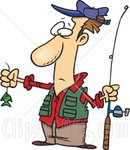 It’s not impossible to breed your goldfish, but it’s not as easy as breeding rabbits or gerbils.
It’s not impossible to breed your goldfish, but it’s not as easy as breeding rabbits or gerbils.
The reason is that goldfish lay eggs in the water, rather than giving birth to baby goldfish. These eggs must be protected until they hatch, and the tiny baby fish (called fry) raised using special baby fish food.
The eggs are vulnerable to infection, and parents will give you no help, either. In fact, they may even eat the eggs, and so the eggs and baby fry will need their own aquarium or pond.
On the other hand, you can potentially raise dozens or even hundreds of baby goldfish from just one spawning, if you’ve got the time, resources and commitment.
You might even get the bug, and try and develop your own line of fancy goldfish. After all, no fancy goldfish occur naturally in the wild - they have all been developed by many years of selective breeding.
Key steps in breeding goldfish
Click on the links below (where available) for information on that specific breeding step.
- Choose the parent fish for breeding
- Separate the male and female goldfish
- Feed your brood stock to improve their condition ahead of breeding
- Prepare the special aquarium that you will use to raise your goldfish fry
- Reunite the male and female goldfish in early Spring in the breeding aquarium
- Watch your goldfish making love! Then remove the parents, and wait for the eggs to hatch
- Feed the babies baby brine shrimp, switching to other foods as they grow
- Maintain good water conditions in the fry aquarium
- Cull weak or deformed goldfish in order to preserve the genetic line
- As they grow, divide the goldfish out into more aquariums or ponds to avoid overcrowding











